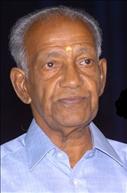 Diaspora comes from the Greek word ‘Diaspeirein,’ meaning ‘to disperse or scatter.’ Diaspora is the dispersal or the scattering of persons with common identity such as culture and language in different directions.
Diaspora comes from the Greek word ‘Diaspeirein,’ meaning ‘to disperse or scatter.’ Diaspora is the dispersal or the scattering of persons with common identity such as culture and language in different directions.
The dispersal of persons and communities is an age-old happening but the phrase is of current usage. The Jewish, Indian and Chinese Diasporas are some of the vibrant ones with a global presence. This scattering started with trade many centuries ago but changed to contract and indentured labour migration during the early colonial days, especially after the abolition of slavery in 1834.
The Diaspora in later years included professionals in search of greener pastures and refugees and asylum seekers from politically oppressive regimes.
The dispersal of Tamils around the globe is not of recent origin. There are more than 70 million of them residing in 50 countries, rich in heritage, culture, language and literature. In many cases, their unity was consolidated by struggle, suffering and aspiration for a brighter future for their successive generations.
Sustained passion
According to Father Henry Heras, a famous Indian historian of Spanish origin, “Tamil is the oldest of the present languages.”
As a powerful Dravidian language, Tamil is perhaps the only example of an ancient language which has survived as a spoken language for more than 2500 years with its basic structure almost unchanged.
The name ‘Tamil’ is itself unique, meaning ‘sweetness’ and ‘coolness.’
Language and culture are two facets of the same identity and a major cultural element. Culture is everything that is socially learned and shared by members of a society; it is an organised system of behaviour and said to be normative because it defines standards of conduct.
According to Edward Burnett Tylor, an Anthropologist, “It is that complex whole which includes knowledge, belief, art, morals, customs and any other capabilities acquired by man as a member of a society.”
Isolated diaspora communities often preserve their cultural heritage much more than their brethren in their homeland.
Patrick Harrigan (based in Jacksonville, Florida, US), Executive Director of Living Heritage Trust (Koslanda, Sri Lanka), is known for his devotion to Lord Muruga and Tamil language.
Values preserved
Writing in the Souvenir published at the ‘Mauritius International Murugan Conference’ held in April 2001, he said, “Jaffna Tamils preserve a dialect of Tamil that is in many respects closer to classical Tamil.”
Each Tamil Diaspora community had to wage its own unique struggle over generations to achieve economic prosperity without losing its identity and traditions. Each has its own stories of how they overcame obstacles peculiar to its adopted homeland.
Despite their relative isolation from their homeland, they have preserved and nurtured Hindu religious traditions such as Kavadi and other cultural elements to posterity.
The digital revolution is not only accelerating the process of globalisation but also strengthening the bonds of the diaspora forging a new cultural, economic and political togetherness of a people and deep rooted kinship ties and finding fresh avenues for expression.
Piet Baker, in ‘Remembering Roots’ (1999) said, “The Internet had made it possible for members of Diasporic groups to communicate regardless of time and distance. Their homeland and national identity, with its ethnic, social, cultural and political meanings are the most covered topics.”
Dual Orientation
The dual orientation towards the country of origin and the country of resettlement is not as contradictory and paradoxical as it seems. In fact, some people with homes in two countries show an amazing capacity to maintain dual identities, with strong cultural ties and contributions to both places.
The early settlement patterns of the Tamils could be traced to the sugarcane plantations of Mauritius, Reunion in the Indian Ocean; Jamaica, Trinidad and Tobago in the Caribbean; Guyana and Suriname in South America; plantations in South Africa; Rubber estates and the Railways in the Federated Malay States (Malaysia); Coffee and Tea estates in Ceylon (Sri Lanka); and coal mines of New Caledonia off Australia in the Pacific Ocean.
The ‘Manimekalai’ followers and the ‘Perumpannan Kovil’ in Indonesia, the ‘‘Thiruvempavai Festival’ in Thailand, ‘Karraikalamman Kovil’ in Kampuchea and the ‘Sivalingam’ worship among the Mayans of Mexico are valid traces of early Tamil settlements far and wide in the world.
Britain, Canada and the US have more than 300,000 each of Tamil-speaking people, while Australia accounts for about 30,000, all of who have migrated mainly from Tamil Nadu and Sri Lanka.
According to estimates, these countries have more than 250,000 Tamils from Sri Lanka, comprising voluntary migrants and refugees/asylum seekers. India and Sri Lanka account respectively for 61 million and five million Tamils. According to some reports, Malaysia has about 1.4 million people of Tamilian origin.
V Sivasupramaniam is a former employee of Education Service in his native Sri Lanka. He has also worked in Nigeria and Seychelles. He is a freelance writer resident in Auckland. The above article is the first in a series of three parts, the second of which will appear in our next issue.
Tamilians in New Zealand preserve tradition and culture. The picture appearing here was taken at the ‘Thirukalyanam,’ the Divine Wedding of Lord Murugan held at the Thirumurugan Temple in Ellerslie Auckland on April 30, 2010. The picture shows then Opposition Leader Phil Goff with (from left) Labour MP Dr Rajen Prasad, Auckland businessman Puvanakumar Sundaramoorthy, Labour Party members Sunny Kaushal and Carol Beaumont.






